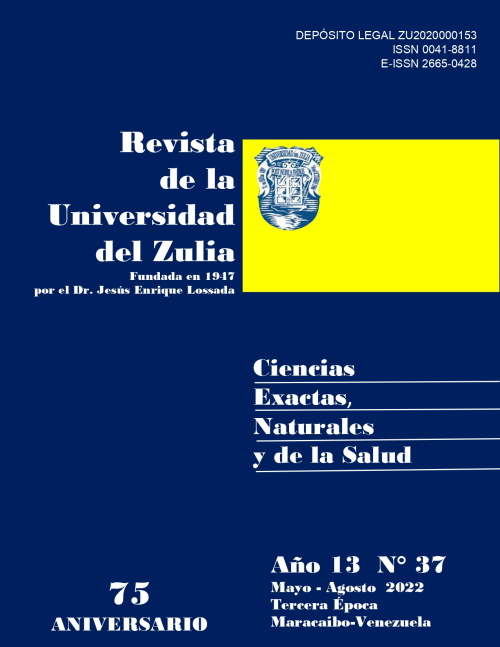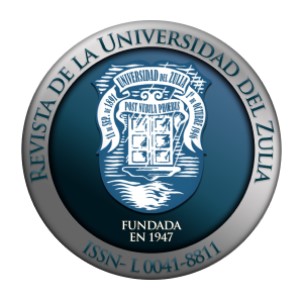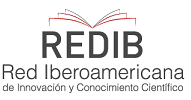Features of changes in prooxidant-antioxidant balance of tissues during activation of seed germination
Abstract
Aim of the research: to identify changes in the value of indicators of the state of the prooxidant-antioxidant system (PAS) in seed tissues at rest and the initiation of its germination processes. The subject of the research is the role of individual components of the PAS in ensuring the activation of seeds before germination. Methodology. Quantitative determination of indicators of the state of PAS was performed on tissue samples of seeds of the following plants: Glycine max L., Helianthus annuus L., Fagopyrum esculentum L., Linum usitatissimum L., Sinapis alba L., Chenopodium quinoa L., Panicum miliaceum L., Oryza sativa L., Avena sativa L., Zea mays L., Hordeum vulgare L., Triticum durum Desf. The concentration of superoxide anion radical (•O2-), TBA-active products, cytochrome oxidase activity, superoxide dismutase activity, catalase, the concentration of ascorbic acid, glutathione was determined. The results of the research show that for the tissues of seeds of experimental Magnoliopsida plants at rest, both links of PAS are more powerful than in Liliopsida, the level of free radical peroxidation (FRPO) is lower, which is achieved by both enzymatic and low molecular weight antioxidants (AO). Germination activation enhances both links of PAS in all experimental groups of plants, however, in Magnoliopsida, we observe the stronger generation of •O2-, and the predominance of protection by enzymatic AO, and in Liliopsida - low molecular weight.
Downloads
References
Baiano A., del Nobile M.A. (2015) Antioxidant compounds from vegetable matrices: Biosynthesis, occurrence, and extraction systems. Crit. Rev. Food Sci. Nutr.;56:2053–2068. doi: 10.1080/10408398.2013.812059
Bartoli C. G., Casalongueb C. A., Simontacchia M., Marquez-Garciac B., Foyer C. H. (2013). Interactions between a hormone and redox signaling pathways in the control of growth and cross-tolerance to stress // Environ. Exp. Bot. – 2013. – 94. – P. 73–88. http://dx.doi.org/10.1016/j.envexpbot.2012.05.003
Bobrova, M., Holodaieva O., Koval S., Kucher O., Tsviakh O. (2021). The effect of hypothermia on the state of the prooxidant-antioxidant system of plants. Revista de la Universidad del Zulia. 33. 2021. P. 82-101. DOI: https://doi.org/10.46925//rdluz.33.07
Bobrova, M., Holodaieva, O., Arkushyna, H., Larycheva, O. y Tsviakh, O. (2020). The value of the prooxidant-antioxidant system in ensuring the immunity of plants. Revista de la Universidad del Zulia. 11, 30 (jul. 2020), 237-266. DOI: https://doi.org/10.46925//rdluz.30.17
Cvetkovska M., Vanlerberghe G. C. (2013). Alternative oxidase impacts the plant response to biotic stress by influencing the mitochondrial generation of reactive oxygen species // Plant Cell Environ. – 2013. – 36. – P. 721–732. https://doi.org/10.1111/pce.12009
Dat J.F., Vandenabeele S., Vranova E. et al. (2000) Dual action of the active oxygen species during plant stress responses // Cell. Mol. Life Sci. V. 57. P. 779-795.
Foyer C. H., Noctor G. (2009). Redox regulation in photosynthetic organisms: signaling, acclimation, and practical implications // Antioxid. Redox Signal. – 2009. – 11. – P. 861–906. DOI: 10.1089/ars.2008.2177
Galiba G., Vanková R., Irma Tari, Bánfalvi Z., Poór P., Dobrev P., Boldizsár Á., Vágújfalvi A., Kocsy G. (2013) Hormones, NO, antioxidants and metabolites as key players in plant cold acclimation. Plant and Microbe Adaptations to Cold in a Changing World / Eds. R. Imai, M. Yoshida, N.Matsumoto. New York: Springer Science+Business Media, P. 73-88. DOI: 10.1007/978-1-4614-8253-6_7
Gautam V., Kaur R., Kohli S.K., Verma V., Kaur P., Singh R., Saini P., Arora S., Thukral A.K., Karpets Yu.V., Kolupaev Yu.E., Bhardwaj R. (2017). ROS compartmentalization in plant cells under abiotic stress condition // Reactive Oxygen Species and Antioxidant Systems in Plants: Role and Regulation under Abiotic Stress / Eds. Khan M.I.R., Khan N.A. – Springer, Singapore, 2017. – P. 89-114.
Gill, S. S., Tuteja, N. (2010). Reactive oxygen species and antioxidant machinery in abiotic stress tolerance in crop plants. Plant Physiol. Biochem. 48, 909–930. https://dx.doi.org/10.3390%2Fantiox9080681
Halliwell B. Reactive species and antioxidants (2006). Redox biology is the fundamental theme of aerobic life. Plant Physiol. 2006;141:312–322. doi: 10.1104/pp.106.077073
Hasanuzzaman М. M. H. M., Borhannuddin B. T. I. А, Khursheda P., Kamrun N., Jubayer A. M., Masayuki F. (2019) Regulation of Ascorbate-Glutathione Pathway in Mitigating Oxidative Damage in Plants Under Abiotic Stress. Antioxidants (Basel) Sep; 8(9): 384. https://doi.org/10.3390/antiox8090384
Hirayama T., Shinozaki K. You have free access to this content research on plant abiotic stress responses in the post-genome era: past, present and future // Plant J. – 2010. – 61. – P. 1041–1052. DOI: 10.1111/j.1365-313X.2010.04124.x
Jaspers P., Kangasjarvi J. (2010). Reactive oxygen species in abiotic stress signaling // Physiol. Plant. – 2010. – 138. – P. 405–413. DOI: 10.1111/j.1399-3054.2009.01321.x
Kaznachieieva M.S., Tsebrzhynskyi O.I. (2011). Doslidzhennia rozpodilu aktyvnosti tsytokhromoksydazy v tkanynakh tsybuli ripchastoi riznykh za rivnem stiikosti do khvorob sortiv [Investigation of the distribution of cytochrome oxidase activity in onion tissues of different varieties of disease resistance] Svit medytsyny ta biolohii. Poltava, 2011. 3. 10–12. (in Russian). https://womab.com.ua/upload/7.3/SMB-2011-03-010.pdf
Kolupaev Yu. Ye., Karpets Yu. V. Aktivnyye formy kisloroda i stressovyy signaling u rasteniy [Reactive oxygen species and stress signaling in plants] // Ukrainian biochemical journal. 2014. Vol. 86 (4). 18-35. (in Russian). http://nbuv.gov.ua/UJRN/BioChem_2014_86_4_4.
Kolupaev Yu. Ye., Karpets Yu. V. (2010). Formation of plants adaptive reactions to abiotic stressors influence. – Kyiv: Osnova, 2010. – 352 p. (In Russian). http://dspace.knau.kharkov.ua/jspui/bitstream/123456789/675/1/Kolupaev.Karpets.Monogr aphy.pdf
Kolupaev Yu.E., Karpets Yu.V. (2019). Reactive oxygen species, antioxidants, and plants resistance to influence of stressors. Kyiv: Logos, 2019. 277 p. http://dspace.knau.kharkov.ua/jspui/bitstream/123456789/1802/1/Kolupaev_Karpets -2019- ROS.pdf
Kolupaev Yu.E., Karpets Yu.V., Kabashnikova L.F. Antioxidative system of plants: cellular compartmentalization, protective and signaling functions, mechanisms of regulation // Applied Biochemistry and Microbiology. 2019. V. 55(5). P. 441-459. https://doi.org/10.1134/S0003683819050089
Kreslavski V. D., Allakhverdiev S. I., Los D. A., Kuznetsov V. V. Signaling role of reactive oxygen species in plants under stress // Russ. J. Plant Physiol. – 2012. – 59. – P. 141–154. DOI:10.1134/S1021443712020057
Kumar S., Malik J., Thakur P., Kaistha S., Sharma K.D., Upadhyaya H.D. (2011) Growth and metabolic responses of contrasting chickpea (Cicer arietinum L.) genotypes to chilling stress at reproductive phase. Acta Physiol. Plant. V. 33. P. 779-787. DOI 10.1007/s11738-010-0602-y
Los D. A., Zorina A., Sinetova M., Kryazhov S., Mironov K., Zinchenko V. V. (2010). Stress sensors and signal transducers in Cyanobacteria // Sensors. – 2010. – 10. – P. 2386–2415. doi: 10.3390/s100302386
Mittler, R. ROS Are Good. Trends in Plant Science (2017). – Vol. 22, N 1. – P. 11–19.
https://doi.org/10.1016/j.tplants.2016.08.002
Moller I. M. Plant mitochondria and oxidative stress: Electron transport, NADPH turnover, and metabolism of reactive oxygen species // Ann. Rev. Plant Physiol. Plant Mol. Biol. – 2001. – 52. – P. 561–591. DOI: 10.1146/annurev.arplant.52.1.561
Nonogaki H. Seed Biology Updates—Highlights and New Discoveries in Seed Dormancy and Germination Research. Front. Plant Sci. 2017;8:1–16. doi: 10.3389/fpls.2017.00524
Oracz K., Karpinski S. Phytohormones Signaling Pathways and ROS Involvement in Seed Germination. Front. Plant Sci. 2016;7:864. doi: 10.3389/fpls.2016.00864.
Pacheco J. H. L., M. A. Carballo, and M. E. Gonsebatt, (2018). “Antioxidants against environmental factor-induced oxidative stress,” in Nutritional Antioxidant Therapies: Treatments and Perspectives, K. H. Al-Gubory, Ed., vol. 8, pp. 189–215, Springer, Cham, Switzerland. https://doi.org/10.1007/978-3-319-67625-8
Pacheco J. H. L., M. A. Carballo, and M. E. Gonsebatt, (2018). “Antioxidants against environmental factor-induced oxidative stress,” in Nutritional Antioxidant Therapies: Treatments and Perspectives, K. H. Al-Gubory, Ed., vol. 8, pp. 189–215, Springer, Cham, Switzerland. https://doi.org/10.1007/978-3-319-67625-8
Polesskaja O.G. (2007) Rastitel'naja kletka i aktivnye formy kisloroda: uchebnoe posobie [Plant cell and reactive oxygen species]. KDU, Moskva. (in Russian).
Rhoads D. M., Umbach A. L., Subbaiah C. C., Siedow J. N. Mitochondrial reactive oxygen species. Contribution to oxidative stress and interorganellar signaling // Plant Physiol. – 2006. – 141. – P. 357–366. DOI: 10.1104/pp.106.079129
Sagi M., Fluhr R. Production of reactive oxygen species by plant NADPH oxidases // Plant Physiol. – 2006. – 141. – P. 336–340. DOI: 10.1104/pp.106.078089
Silvina M., Silvina P. D. J., José M. E. ROS Regulation of Polar Growth in Plant Cells. Plant Physiol. 2016 Jul; 171(3): 1593–1605. https://dx.doi.org/10.1104%2Fpp.16.00191
Suzuki N., Koussevitzky S., Mittler R., Miller G. ROS and redox signaling in the response of plants to abiotic stress // Plant Cell Environ. – 2012. – 35. – P. 259–270. DOI: 10.1111/j.1365- 3040.2011.02336.x
Vranova E., Inze D., Breusegem F. Signal transduction during oxidative stress // J. Exp. Bot. – 2002. – 53. – P. 1227–1236. https://doi.org/10.1093/jexbot/53.372.1227
Wolny, E.; Betekhtin, A.; Rojek, M.; Braszewska-Zalewska, A.; Lusinska, J.; Hasterok, R. Germination and the Early Stages of Seedling Development in Brachypodium distachyon. Int. J. Mol. Sci. 2018, 19, 2916. https://doi.org/10.3390/ijms19102916
Xu, D.-P.; Li, Y.; Meng, X.; Zhou, T.; Zhou, Y.; Zheng, J.; Zhang, J.-J.; Li, H.-B. (2017) Natural Antioxidants in Foods and Medicinal Plants: Extraction, Assessment, and Resources. Int. J. Mol. Sci. 18, 96. https://doi.org/10.3390/ijms18010096
Copyright
The Revista de la Universidad del Zulia declares that it recognizes the rights of the authors of the original works published in it; these works are the intellectual property of their authors. The authors preserve their copyright and share without commercial purposes, according to the license adopted by the journal..
This work is under license:
Creative Commons Reconocimiento-NoComercial-CompartirIgual 4.0 Internacional (CC BY-NC-SA 4.0)
































